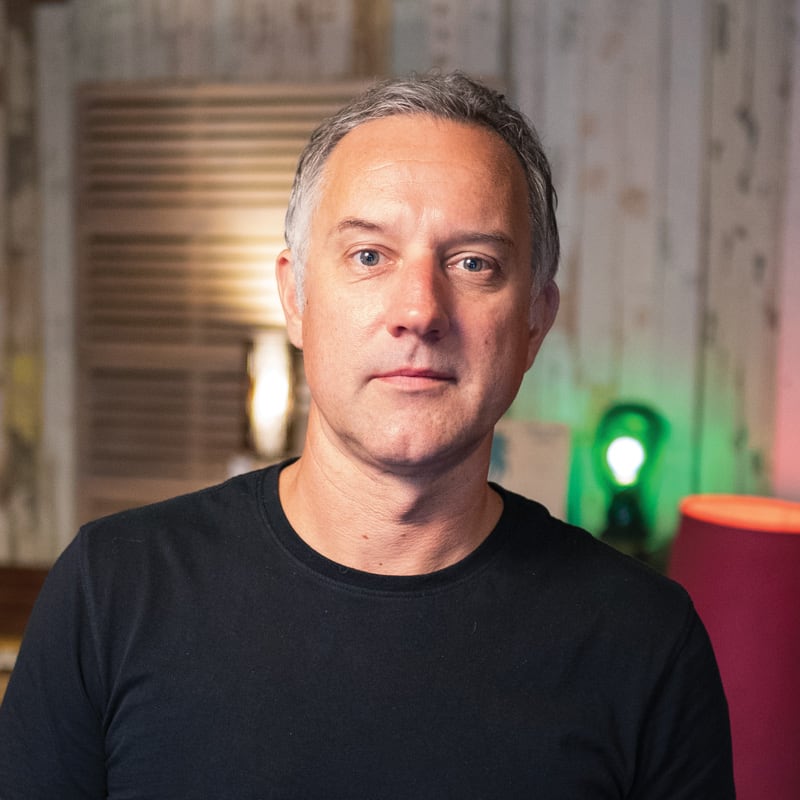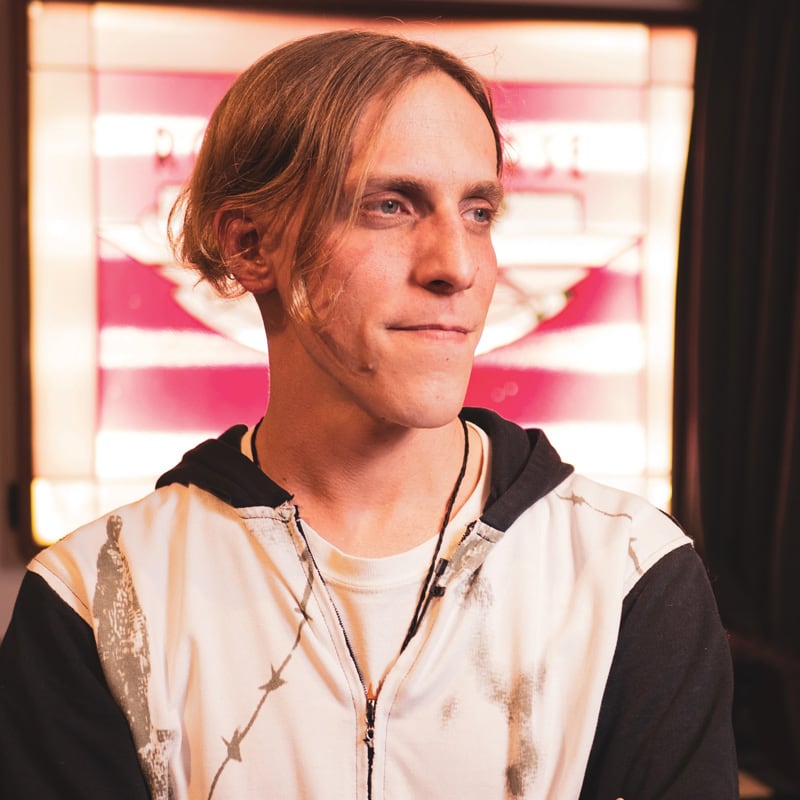
Studio Focus: Rockinghorse Studios
Byron Bay's famous Rockinghorse Studios fell into the hands of developers, with a heart of gold.
The collision of real estate developers and recording studios usually spells bad news. That somewhere, out there, a studio is making way for yet another apartment block. Even Australia’s largest studios aren’t immune. Sing Sing Studios in Melbourne had to pack all its gear into the smaller ‘South’ studio when it couldn’t afford the asking price; Studios 301 also relocated to a completely new-built studio to escape development. Up in Byron Bay, the script has been flipped.
When Taryn McGregor and her husband Rob bought the 70-acre property with Taryn’s father two years ago, they never expected to end up running a studio. Their family-owned real estate business specialises in regenerating land into the perfect plots for someone else’s dream home. Other than Rob’s profession as a tiler, they don’t do much with buildings, especially not commercial recording studios. “We bought Rockinghorse for the land, not for the studio,” said Taryn. “But when we got here and looked at the 70 acres, we realised there was a big opportunity here.”
Taryn and Rob have lived in Byron Bay for the past 12 years, “another 10 or 15 years to go” before qualifying as locals reckons Taryn, but long enough to have heard of a studio nestled up in the hinterland. Once they bought the property, they realised every man and his dog in the industry had a story about Rockinghorse. “You’d run into people on the street who would say they’d known Rockinghorse from way back,” shared Taryn. “But it also felt forgotten about. People knew it was still there but nobody knew what was going on.”

ROCKINGHORSE OVERGROWN
Rockinghorse was built on the Byron Bay property’s garage slab in 1992 by Alan De Vendra, who had been the sole owner until recently. It was originally a control room, with two live rooms and a Neve V series console. The list of artists who’ve recorded at the facility include a who’s who from Wolfmother’s Andrew Stockdale, Grinspoon and Spiderbait, to Olivia Newton-John and Yothu Yindi. Most recently, Sticky Fingers’ latest gold record came out of there.
To a group who have built a reputation for reviving sites, making a decision to break up an iconic studio felt counter to their life’s work. When they met the two engineers who were running the studio at the time — Anthony Lycenko and Nicholas Wilson — it cemented their inclination to keep Rockinghorse’s legacy intact. “Amazing, passionate people who were already here and wanted to run it,” recalled Taryn. “They really influenced our decision to set it up again.”
While the studio had remained relatively busy, it was clear the couple needed to not only perform their regeneration routine with the surrounding land, but to the studio and house, too. They got to work on the land, clearing swathes of Camphor Laurel trees and overgrown Lantana, then replanting almost 4000 endemic plants. The house was in good shape, but they replaced the weathered verandah, added a roof over it, and upgraded the facilities and furniture to resort levels. It already had a pool and immaculately-tended garden, but the refresh has certainly re-invigorated the spot as a holiday destination.
In the studio, a good spit and polish brought out the lustre of the wood finishes, Taryn removed and reclad all the acoustic treatment, and commissioned a local indigenous artist to tell the story of the area on canvas.
The lion’s share of the work was a complete overhaul of the studio electronics. With guidance and a wiring diagram from Bruce McBean (lead engineer on the Custom Series 75 console), in-house engineer Nicholas Wilson completely re-wired the studio. “It hadn’t had a renovation since it was originally built,” said Taryn. “Thousands of connections later, a whole new look for the colouring and tone, and a good scrub. It just felt so fresh and new again.”
Something had to be done about the Neve V series console, too, which had seen better days. After a lot of thought, the console was decommissioned and Nicholas and Rob drove the modules down to Rob Squire in Adelaide to be racked up into channel strip bays. There’s now eight professionally-racked channel strips sitting on either side of a Slate Raven touchscreen controller. The rest have been racked up into pairs, not that Rockinghorse needs any more Neve outboard. It already has 24 vintage Neve 1272 preamps and four Neve 1064 channel strips to go along with its API and Avalon preamps. It’s world-class gear everywhere. Loads of Teletronix, UA, Neve, dbx and Smart compression; a pair of original Pultec EQP1A EQs and a stereo GML EQ; plus an effects rack packed with an Ursa Major, Sansamp, Lexicon 480L, and Roland Dimension D units. They also have a Studer A820 tape machine and an EMT gold foil plate.
The mic cabinet includes a pair of vintage tube AKG C12B condensers, a Neumann U89i, U87, U47 FET, a couple of TLM170s and three KM184s. There are more AKG C414s, and a range of dynamic options from Sennheiser, Shure, AKG and Electro-voice. As well as the Slate Raven, the desk has a Slate Control hardware monitoring system integrated into it, which feeds a pair of the new KRK V8 midfields, Yamaha NS10s and Genelec 1032As.
There are three recording spaces at Rockinghorse. The control room looks directly out into the main live room, which has a wood-panelled, dome-like vaulted ceiling at one end. Its asymmetrical design gives engineers plenty of options when placing drums, and there’s loads of height in the ceiling for capturing ambience.
It also looks out over the incredible landscape, giving a connection with the outdoors no matter where you’re sitting in the studio. To the left of the control room is another space with a slightly tamer acoustic. It has a direct line of sight from the engineer’s chair to the talent, which Nicholas uses to communicate during vocal takes. The renovation also converted the entrance way into another live room. Sliding wooden doors can create a connection or separation between the two smaller rooms where required. It’s a great set of rooms to work out of and plenty for a large band to make themselves at home.

THE PRIVATE STUDIO
There was previously a second studio on site; a 5.1 post production suite in a large water tank just to the left of the main studio. “It’s more of a reverb tank,” said Taryn, alluding to what the engineers had been using it for lately. “It always had wetness issues, so we had to gut it and waterproof it. Understanding it’s structure, we thought it wasn’t really going to work.”
The plan is to convert the water tank into budget accomodation, for bands that can’t afford to rent the house. It’s adjacent to the studio’s kitchen and lounge facilities, and still has a killer view.
Out on the property, down across the gully, was another shed that wasn’t seeing much use. Although it’s only a couple of hundred metres away, it was completely obscured by Camphor Laurels before they carved out a clear view between it and Rockinghorse.
“We had a bit of a go to see what we could come up with,” said Taryn. There’s now a commercial, ‘for hire’ second studio there called The Workshop, that’s also home to composer and producer Murray Burns of Mi-Sex, and producer Paul Pilsneniks. Murray helped design the original studio over 25 years ago, so it was like bringing back the original family when he and Taryn worked on The Workshop design together. It’s a homely studio, full of recycled paint and timber, and some of the pieces from the old studio. It has an oversized control room that could easily house an entire band. It’s stocked with some esoteric organs and keyboards, has an eclectic amp iso booth with everything hooked up and ready to go, and a reasonably-sized iso room, big enough to record drums. Outdoors, there’s a shower, and fireplace and full-size outdoor kitchen under the verandah. For ultra cheap stays in the outdoors, bands can simply bring a swag with them and camp out undercover.

THE APPEAL
There have been a few shifts in the recording industry. Home recording cut away at the viability of commercial studios, and as recording equipment became more accessible, an appetite developed for location recording. Artists started scouring holiday rental sites for re-purposed chapels and Mechanics Institutes; somewhere with decent-sounding acoustics and a bed to sleep in. Partly for the experience of getting out into the countryside, and also to get a bit of space from neighbour’s sleep routines.
Of course, setting up a makeshift studio can be a drag.
That’s the whole appeal of Rockinghorse. You can have both: an incredible view and a working, top-flight commercial studio — 24/7. No need to lug anything more than your instruments; no need to find a spot where your monitors don’t sound like puss; and no need to travel 100km to the ‘local’ music store when you forget that one lead.
You can also have the experience within a range of budgets. Go the full-hog and rent Rockinghorse and the five-star resort accommodation where you’re literally a 20-second stroll to the studio, at most. Or camp out in a swag under the stars. “60-70% of artists are making use of the house as well, and staying for a few days or weeks,” said Taryn. “They’ve been loving the experience of staying here, and being able to record late at night or in the morning.
“A lot of the reason people come to Byron is for the arts and culture, and connection to the land. This place inspires that connection to the land. You just want to sit still and enjoy the space. When people take time out, creativity flows!”
ROCKINGHORSE PEOPLE

















RESPONSES